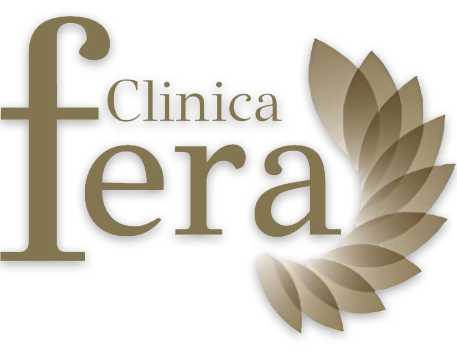What Exactly Is
Breast Augmentation?
Breast augmentation is a popular cosmetic procedure that aims to enhance the size and shape of a woman’s breasts. It involves the placement of breast implants to achieve the desired aesthetic goals. In this article, we will explore the various aspects of breast augmentation surgery, including the procedure, types of implants, recovery process, benefits, and more.
What is Breast Augmentation Surgery?
Breast augmentation surgery involves the placement of breast implants to enhance the size, shape, and overall appearance of the breasts. The implants can be filled with saline solution or silicone gel, and they are inserted either behind the breast tissue or beneath the chest muscle. The procedure aims to create fuller, more proportionate breasts that enhance a woman’s self-confidence and body image.
Reasons for Breast Augmentation
There are several reasons why women choose to undergo breast augmentation surgery. Some common motivations include:
- Enhancing Breast Size: Women who desire larger breasts may opt for augmentation surgery to achieve the desired size and proportion.
- Restoring Breast Volume: Pregnancy, breastfeeding, and weight loss can cause the breasts to lose volume. Breast augmentation can restore fullness and shape.
- Improving Breast Symmetry: Many women have naturally asymmetrical breasts. Breast augmentation can help create better symmetry and balance.
- Boosting Self-Confidence: Breast augmentation can have a positive impact on a woman’s self-esteem, body image, and overall quality of life.
Types of Breast Implants
There are different types of breast implants available, each with its own characteristics. The choice of implant depends on factors such as personal preference, body type, and desired outcome. The three primary types of breast implants are:
Saline Implants
Saline implants are filled with sterile saltwater solution. They are inserted into the breasts and then filled with the saline solution to the desired size. Saline implants are known for their safety and the ability to adjust the volume during surgery. However, they may have a slightly firmer feel compared to silicone gel implants.
Silicone Gel Implants
Silicone gel implants are filled with a cohesive silicone gel that closely resembles the feel of natural breast tissue. They are popular due to their more natural look and feel. Silicone gel implants are available in different sizes and shapes, allowing for a customized outcome. In the rare event of implant rupture, the gel remains within the implant shell or may partially collapse.
Structured Implants
Structured implants are a relatively new type of implant that contains an inner structure designed to enhance shape and provide additional support. They are filled with saline solution and offer a more natural feel compared to traditional saline implants.
Choosing the Right Implant Size and Shape
Selecting the right implant size and shape is crucial for achieving satisfactory results. During the preoperative consultation, your surgeon will assess your body proportions, breast anatomy, and aesthetic goals to help you make an informed decision. Factors to consider when choosing implant size and shape include:
- Your body frame and dimensions
- Existing breast tissue and skin elasticity
- Desired increase in breast size
- Lifestyle and physical activities
Remember, the ultimate goal is to achieve a balanced and natural-looking result that aligns with your overall body proportions.
The Breast Augmentation Procedure
Breast augmentation surgery typically follows a step-by-step process. Let’s explore each stage in detail:
Preoperative Consultation
Before the surgery, you will have a consultation with your surgeon to discuss your goals, medical history, and expectations. The surgeon will evaluate your breast anatomy and recommend the appropriate implant size, shape, and placement options. They will also explain the procedure, recovery process, and potential risks and complications.
Anesthesia
Breast augmentation surgery is usually performed under general anesthesia. This ensures that you are comfortable and pain-free during the procedure.
Incision Options
There are different incision options available for breast augmentation surgery, including:
- Inframammary: The incision is made in the crease beneath the breast.
- Periareolar: The incision is made around the lower half of the areola.
- Transaxillary: The incision is made in the armpit area.
- Transumbilical: The incision is made in the navel area.
The choice of incision depends on various factors, including implant type, surgeon’s preference, and patient’s anatomy.
Implant Placement Options
Breast implants can be placed either above the chest muscle (subglandular) or beneath the chest muscle (submuscular). The placement depends on factors such as existing breast tissue, desired outcome, and your surgeon’s recommendation.
Closing the Incisions
Once the implants are in place, the surgeon closes the incisions using sutures or surgical tape. They take care to ensure minimal scarring and optimal healing.
Recovery and Aftercare
After breast augmentation surgery, it’s crucial to follow your surgeon’s postoperative care instructions for a smooth recovery. Here are some key aspects of recovery and aftercare:
Postoperative Care Instructions
Your surgeon will provide detailed instructions on how to care for your incisions, manage any discomfort or pain, and support the healing process. It is essential to follow these instructions closely to minimize complications and achieve the best possible outcome.
Healing Process
The initial healing period after breast augmentation typically involves some swelling, bruising, and discomfort. This is normal and should gradually improve over time. It’s crucial to give your body ample rest and avoid strenuous activities during the initial recovery phase.
Potential Risks and Complications
As with any surgical procedure, breast augmentation surgery carries some risks. These can include infection, bleeding, scarring, implant rupture, changes in nipple or breast sensation, and capsular contracture (hardening of scar tissue around the implant). It’s important to discuss these risks with your surgeon and ensure you have realistic expectations.
Expected Results and Benefits
Breast augmentation can have transformative effects on a person’s appearance and self-confidence. Some of the expected results and benefits of breast augmentation surgery include:
- Increased breast size and improved breast shape
- Enhanced body proportions and overall symmetry
- Improved self-esteem and body image
- More clothing options and increased confidence in swimwear or lingerie
- Restored breast volume after pregnancy or weight loss
It’s essential to have realistic expectations and discuss your goals openly with your surgeon to achieve the desired outcome.
Breast Augmentation Myths Debunked
Breast augmentation surgery is surrounded by various myths and misconceptions. Let’s debunk some common myths:
- Breast implants cause cancer: Extensive research and studies have shown no direct link between breast implants and an increased risk of breast cancer.
- Implants need to be replaced every ten years: Breast implants do not have an expiration date. While they may need to be replaced eventually, it is not necessary for all patients after ten years.
- Breast implants always look fake: With advancements in implant technology and surgical techniques, it is possible to achieve natural-looking results.
- Breast implants interfere with breastfeeding: Breast implants placed using proper surgical techniques do not typically interfere with breastfeeding.
Cost of Breast Augmentation Surgery
The cost of breast augmentation surgery can vary depending on various factors, including the surgeon’s experience, geographical location, facility fees, anesthesia fees, and the type of implant chosen. It is essential to discuss the cost with your surgeon during the initial consultation and understand any financing options available.
Choosing a Surgeon for Breast Augmentation
Selecting a skilled and experienced plastic surgeon is crucial for a successful breast augmentation surgery. When choosing a surgeon, consider the following:
- Board certification in plastic surgery
- Experience in breast augmentation procedures
- Positive patient reviews and testimonials
- Before and after photos of previous patients
- Open communication and personalized approach
Take the time to research and consult with multiple surgeons to find the one who best understands your goals and provides comprehensive care.
Alternative Options for Breast Enhancement
While breast augmentation surgery is a popular option for enhancing the breasts, there are alternative options available. These include:
- Fat transfer: This procedure involves using liposuction to harvest fat from other areas of the body and injecting it into the breasts to enhance volume and shape.
- Breast lift: Also known as mastopexy, a breast lift focuses on raising and reshaping sagging breasts without significantly increasing their size.
- Nonsurgical treatments: Noninvasive treatments such as breast enhancement creams, massages, and vacuum therapy claim to improve breast appearance. However, their effectiveness may vary.
It’s important to discuss these alternative options with your surgeon to determine the best approach for your specific needs.
Conclusion
Breast augmentation surgery offers a way for women to enhance their breast size and shape, improving their self-confidence and body image. By understanding the procedure, types of implants, recovery process, and other essential aspects, you can make an informed decision about whether breast augmentation is right for you. Remember to consult with a qualified plastic surgeon to discuss your goals, expectations, and any concerns you may have.
Breast augmentation is not suitable for everyone. It is essential to consult with a qualified surgeon to determine eligibility based on individual factors such as overall health, medical history, and expectations.
The recovery period for breast augmentation varies for each individual. Generally, it takes a few weeks to return to normal activities, but it may take several months for the breasts to fully settle and heal.
Breast implants do not usually interfere with breastfeeding. However, it’s important to discuss any concerns regarding breastfeeding with the surgeon beforehand, as certain incision placements may have a higher chance of impacting milk production.
Get In Touch With Us
book@clinicafera.com
Book An Appointment
Book a visit to ClinicaFera, simply fill out the form below and we will contact you back regarding the intervention you require.

